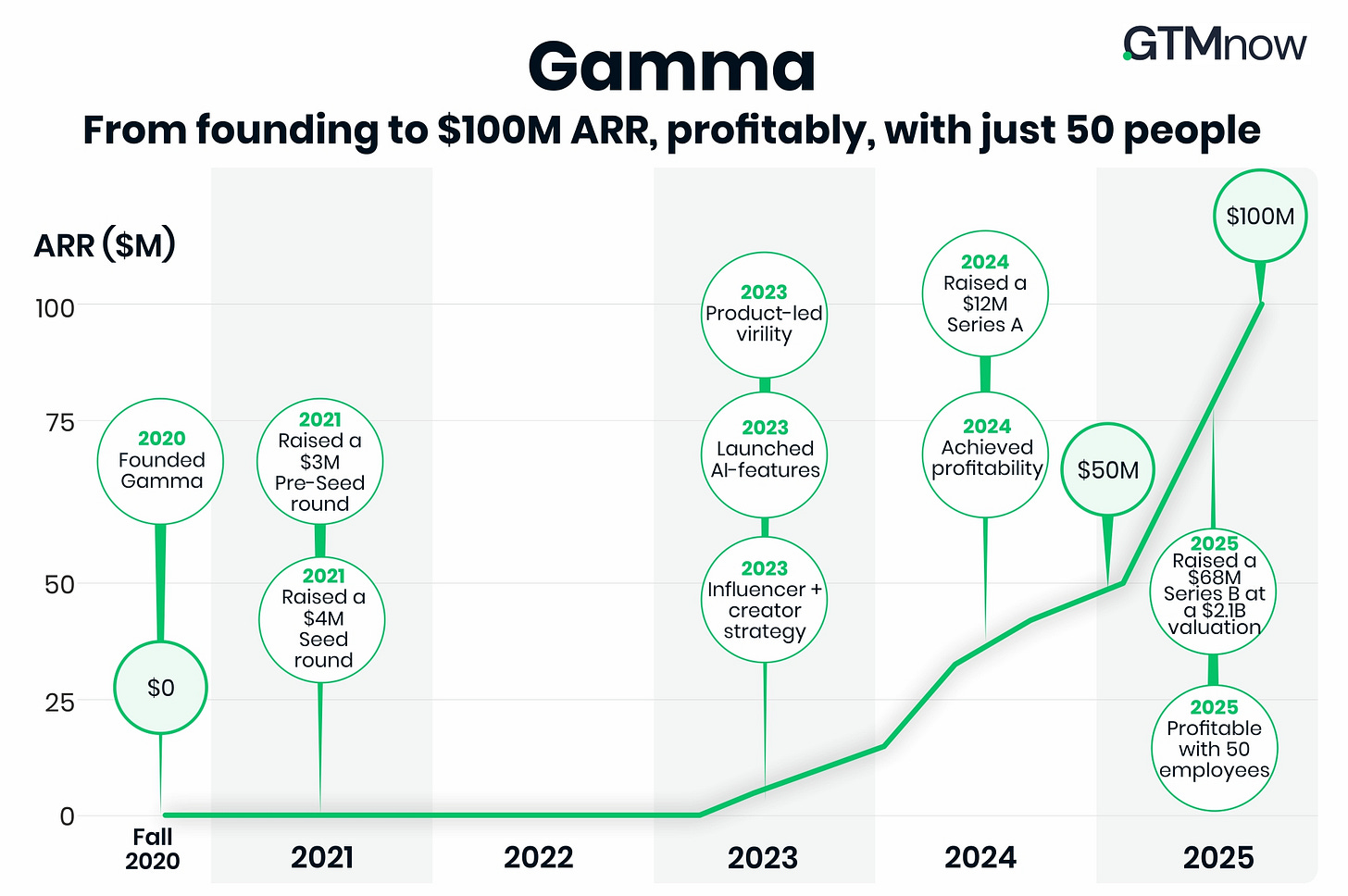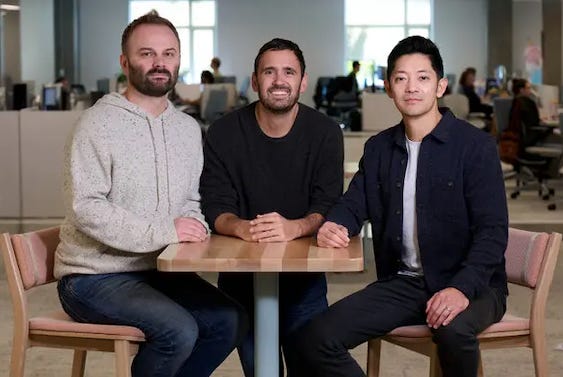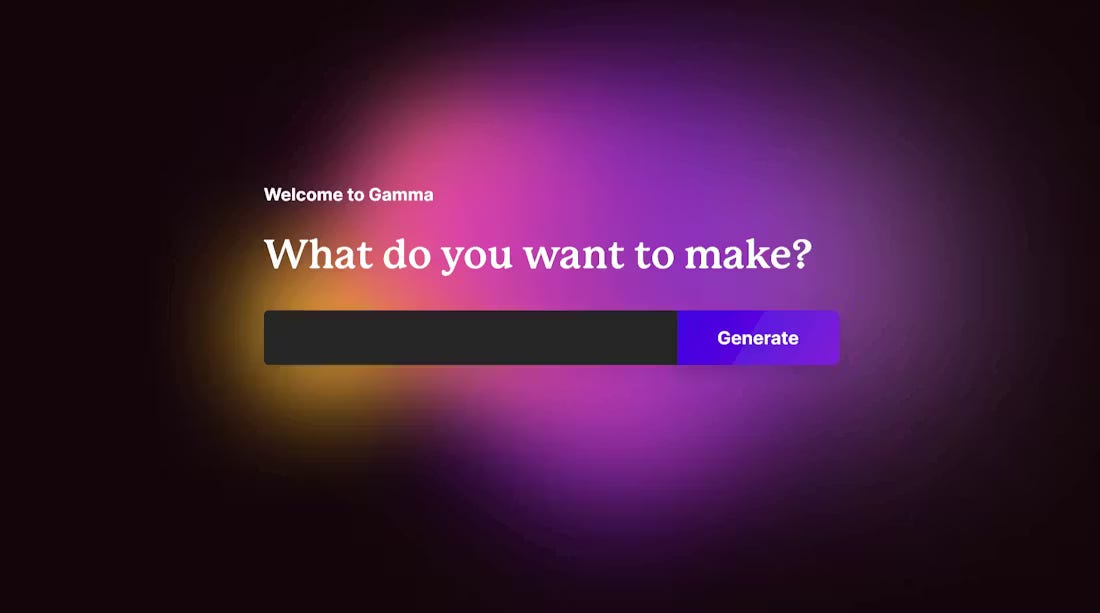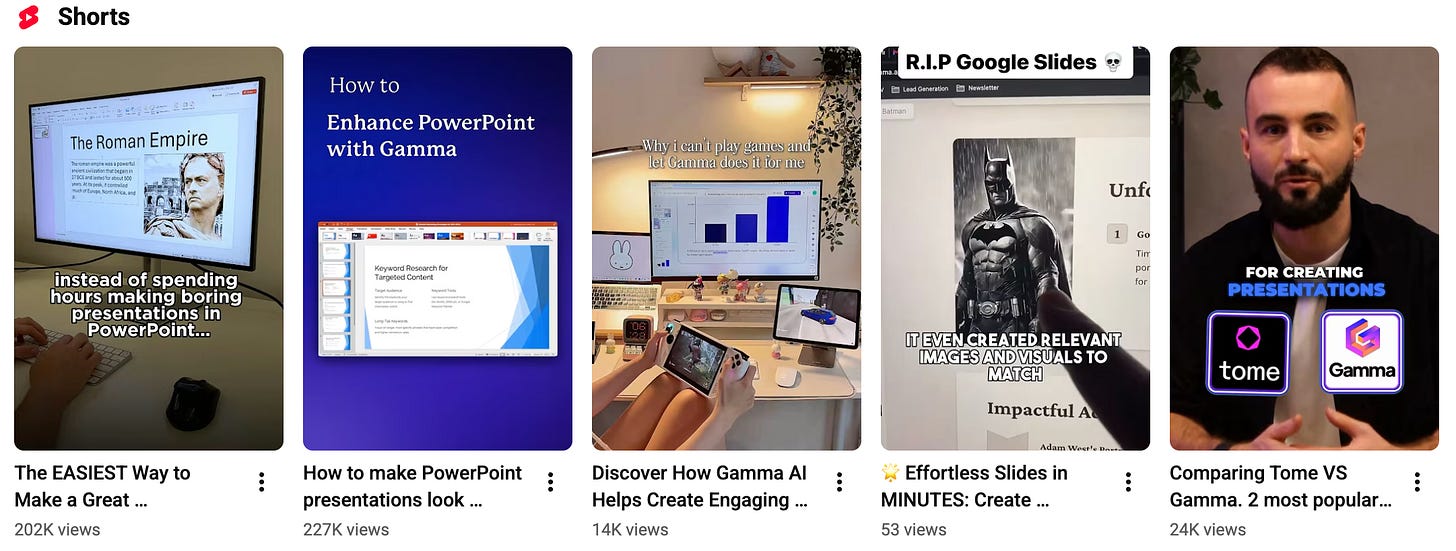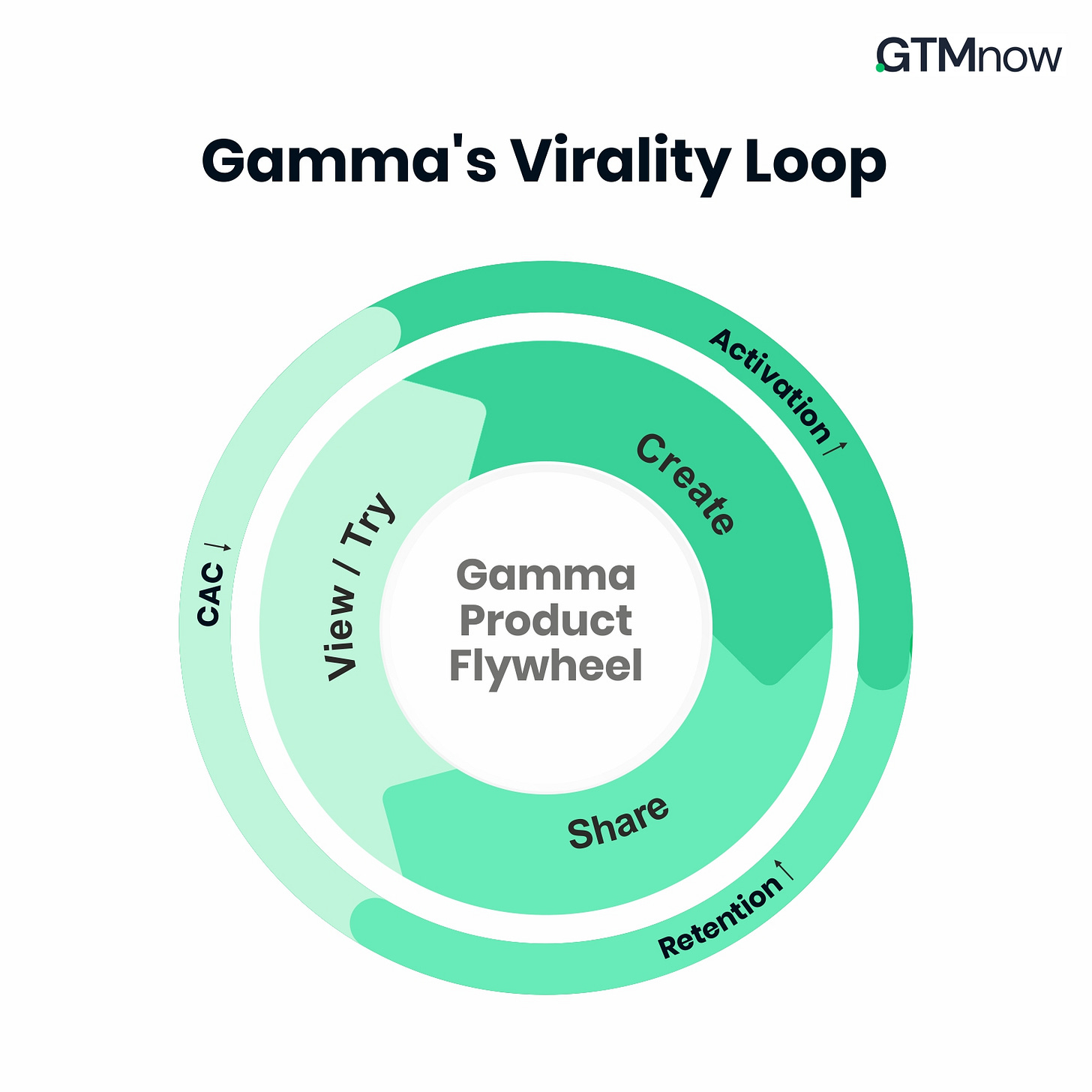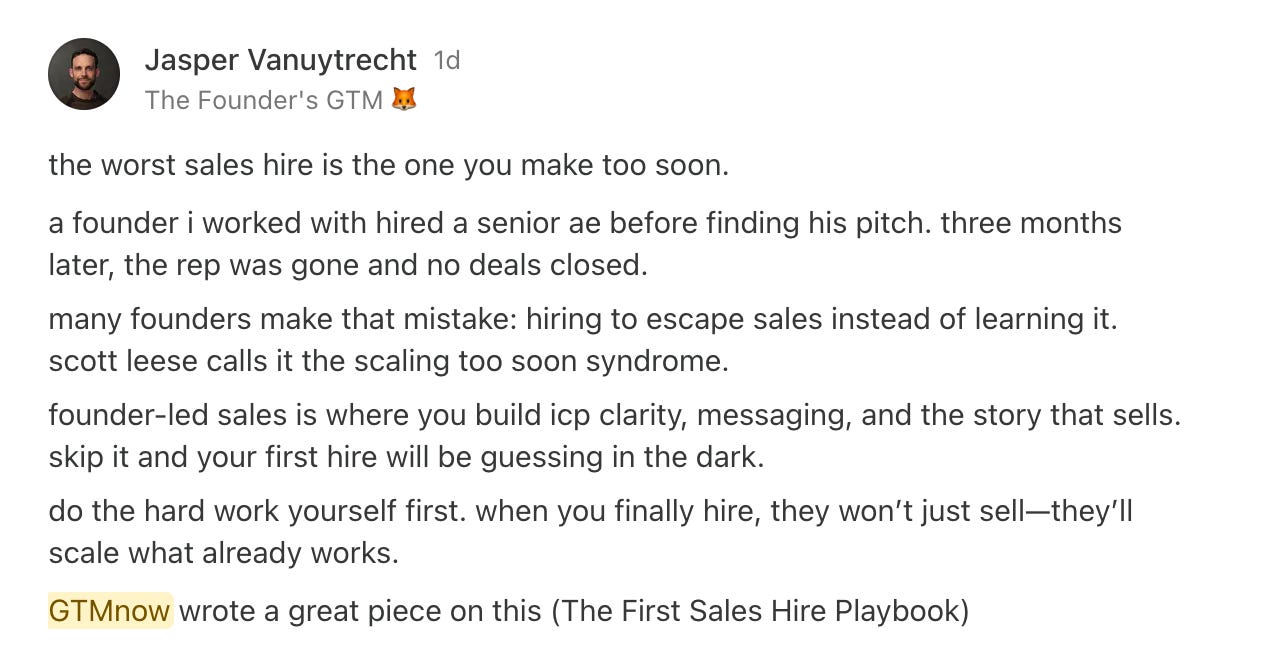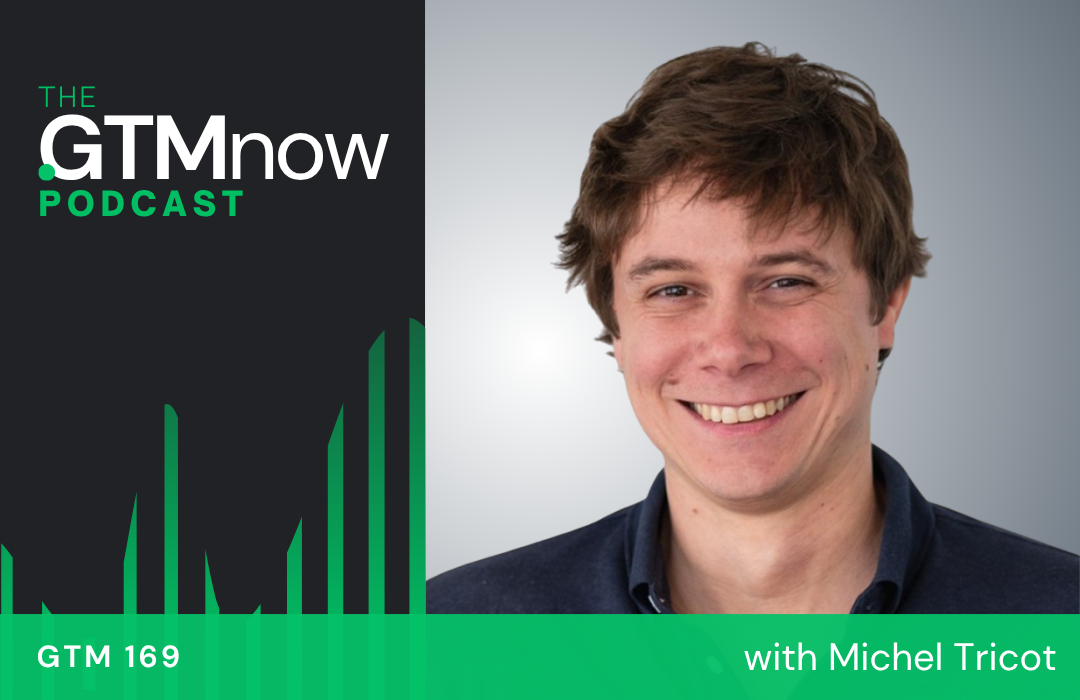How Gamma grew to $100M ARR (and a $2.1B valuation)

Hello and welcome to The GTMnow Newsletter – the media brand of VC firm, GTMfund. Build, scale and invest with the best minds in tech.
This is Part III of a series on Deconstructing GTM. You can find Part I on ClickUp here and Part II on Vanta here.
Gamma announced this week that they reached $100M ARR (profitably) and raised a Series B at a $2.1B valuation.
They now have over 70 million users.
Gamma’s rise looks like an overnight AI triumph, but as usual if you pull back the layers, what looks like an overnight success is actually a series of go-to-market and product pivots.
The NEW book Ignite Your GTM with AI is the definitive playbook for GTM leaders who are done chasing tools and ready to build systems that competitors can’t replicate.
Most leader are automating broken processes. The winners are architecting intelligence. This book shows you exactly how to become one of them.
Available now in print and eBook, it’s the field manual for GTM leaders who want to build revenue systems that actually work, where human judgment and AI move in sync to drive measurable results.
Get your copy and start building your AI-enabled GTM engine today. Learn more about it here or order your copy on Amazon here.
Era I: Beginning with a simple frustration
The company started in 2020, deep in the pandemic, when co-founder Grant Lee was taking conference calls from a park bench because he and his wife were sharing the only desk in their apartment. His daily routine was bouncing between Zoom windows and deck after deck of Google Slides and PowerPoints.
He connected with Jon Noronha, a veteran product leader from Microsoft and Optimizely who had spent years building A/B testing infrastructure used by millions of marketers.
They were joined by James Fox, a technical founder with deep experience in interactive design systems, who had previously led creative engineering projects focused on blending usability and storytelling. The trio shared the same conviction: presentations were still too manual, too slow, and too painful for the modern workflow.
Slides are the language of business. And yet, nobody likes making them. The whole world was stuck in a loop of staring at slides, making slides, or presenting slides (often with a groan.
So Gamma began with a simple (but audacious) idea: reinvent presentations for the modern world.
They started with human frustration. And for the first two years? It didn’t work.
Gamma launched its earliest product into the world…and activation was brutal. The team realized they had built something beautiful, but they were still landing users on a blank page with too many open decisions and not enough guidance. Their drop-off rate was around 95%. Only 5 out of 100 users got to their first “aha!” moment.
For two years, Gamma had some traction, some pockets of PMF, but not enough to justify VC-scale growth.
They were pre-revenue, in a shaky macro environment, and working through the uncomfortable question no founder wants to face: Is this ever going to work?
They continued dogfooding, running user tests, and obsessing over design quality. Still, they weren’t there.
Grant later shared that an early investor told him Gamma was “the worst idea” they had ever heard and hung up the Zoom call mid-pitch. First as investors, that behavior is simply unacceptable. Second, that moment cemented something for the founding team: if Gamma was going to succeed in a category dominated by incumbents with massive distribution, growth would have to be a core competency from day one.
Then the world shifted.
Era II: The AI inflection point and solving activation
Stable Diffusion happened, DALL·E happened, instruction-tuned GPT models happened.
Suddenly AI could produce a meaningful first draft.
Gamma took the leap and integrated generative creation directly into the product. When a user typed an idea, Gamma could now generate an entire presentation draft – structured, designed, and easy to edit.
They launched on Product Hunt and other channels.
AI could solve the core cold-start problem that crippled the category.
“When we built AI that solved our blank page problem, it turned out that it solved everybody else’s blank page problem, too” – Grant (co-founder / CEO)
The blank page problem was gone.
Users didn’t need to think. They just handed Gamma a vague idea and got a full rough draft back.
Activation skyrocketed. People who previously would have dropped off now stayed, edited, shared, and returned.
The biggest friction in a bottoms-up motion is activation. If the user doesn’t get value fast, the motion dies. Gamma solved for their activation challenge.
Under the hood, Gamma wasn’t using one model: it orchestrated 20+ models across outlining, narrative shaping, layout generation, diagramming, and image selection. Each step used “the right model for the right job,” which dramatically improved output quality while reducing cognitive load for the user.
Era III: Influencers and creators as a PLG accelerator
Once activation clicked, the next wave of growth came naturally. Every Gamma deck was designed to be shared. Every shared deck turned into distribution, so each user created more users.
Product-led virality did the heavy lifting.
The team doubled down on experimentation. Coming from Optimizely, they built an internal culture where almost everything was tested: different models, prompt strategies, layout patterns, diagram styles, onboarding flows, and upgrade nudges. They treated AI as infrastructure to be optimized.
Alongside that, they invested heavily in design taste. One-third of their early team were designers. Gamma wasn’t just fast, it was beautiful. That mattered. Good design created delight, and delight created sharing. Sharing created growth, and growth created retention.
This quiet combination became Gamma’s true moat: activation unlock + virality + taste.
Influencer marketing began manually. Grant personally onboarded early creators 1:1 on Zoom to teach them how to use Gamma in their own voice. Instead of paying trendy mega-creators, Gamma focused on thousands of micro-creators whose audiences trusted them deeply. This created a wildfire-style diffusion effect that scaled far faster than paid ads.
Influencers amplifying Gamma were everywhere, across all channels.
Era IV: The GTM engine
Once Gamma found clear product-market fit, they didn’t immediately flood the zone. In fact, their discipline is one of the most under-appreciated parts of the story. Instead of chasing “growth at any cost,” they tightened the fundamentals: improved activation, smoothed the first-run experience, strengthened the retention curve, and made shareability nearly frictionless. Only when the data showed sustained pull did they layer on GTM levers.
Productizing virality
The first major unlock came from treating influencer marketing with product discipline.
Gamma ran influencer programs the same way they ran A/B tests:
-
dozens of micro-creators tested in parallel
-
new accounts seeded to maximize algorithmic upside
-
creator incentives tied to performance, not delivery
-
hooks and formats tracked like funnel metrics
Every video, every angle, every intro line fed into a compounding knowledge base. Over time they built a reusable library of “winning hooks.”
They essentially productized virality.
This system turned creators into a distributed R&D lab — testing narratives, formats, and story angles at scale faster than any internal team could.
Patience around performance marketing
Gamma refused to spend until creative quality was unmistakably strong. Brand was a system to be iterated on until every surface reinforced the same promise.
This made scaling spend dramatically more efficient. When acquisition efforts did ramp, the click → landing → product experience carried one coherent message. The unit economics reflected that discipline.
The amplification loop (growth flywheel)
Influencer formats fueled awareness → usage → creation → sharing → more awareness. The product itself was the loop. Slides created became slides shared, which became slides viewed, which became new users entering the top of the funnel.
Gamma exposed and accelerated the product’s existing viral mechanics.
A lean team
One of the more surprising parts of their strategy is how small the team remained. While most companies would respond to traction by hiring specialists across data, design, paid, PMM, research, and engineering, Gamma doubled down on generalists. Instead of headcount expansion, they built capability expansion.
A growth PM built their own analytics stack, a marketer synthesized thousands of customer interactions via NotebookLM, a designer prototyped, tested, validated (with no engineers).
Internal tools were built fast, iterated fast, and adopted fast.
Each person operated as a force multiplier not because they worked longer hours, but because they worked differently.
AI was their human accelerant.
Claude wasn’t just a chatbot, it was the analysis engine.
Cursor wasn’t a code editor, it was a collaborator.
NotebookLM wasn’t a notes app, it was the research department.
Gamma itself became the surface for storytelling, iteration, and alignment.
A 50-person team moved like a 200-person team.
All ten of Gamma’s first employees are still at the company five years later. This is an unheard-of retention rate that gave them continuity, shared context, and compounding execution velocity.
By 2024, Gamma had reached $50M ARR.
By 2025, they passed $100M ARR (profitably) and raised a $68M Series B at a $2.1B valuation.
Frameworks, mental models and playbooks
These are some of the frameworks, mental models and playbooks that Gamma used throughout the eras of growth.
Mental models (how to think)
Solve the first mile, not the last mile
Activation is the hardest part of PLG. The blank page is where almost every slide product dies.
Gamma reframed the problem:
Solve the first mile (idea → draft) and the user will gladly handle the last mile (editing → polishing).
To apply this, identify the single highest-friction moment in your onboarding. Then, design the product so users skip it entirely.
Output is distribution
Every artifact created becomes a marketing asset.
Tips for implementing:
-
Add subtle branding to every shared output.
-
Reduce friction between viewing and trying.
-
Instrument “view → signup” as a core growth KPI.
Experimentation is a culture, not a team
A/B tests weren’t just for funnels. Gamma ran experiments on:
-
Model selection
-
Prompt orchestration
-
Pricing
-
Onboarding
-
Templates
-
Share flows
Experimentation was the operating system.
Monetize after the magic
Value first, price later.
Freemium → instant output → emotional “wow” → habit → conversion.
Tips for implementing:
-
Delay paywalls until after the “aha moment.”
-
Charge only for meaningful upgrades (collab, export, brand control).
Frameworks (how to structure)
The activation flywheel
Value unlocks virality:
Draft → Refine → Share → Return → Expand → Invite → Share → Expand
Activation is the upstream driver of virality and retention.
Tips for implementing:
-
Instrument the activation path.
-
Define the “first meaningful output.”
-
Optimize time-to-draft relentlessly.
The three-horizon output strategy
Gamma’s layers of value:
-
Horizon 1: Presentations (core entry point)
-
Horizon 2: Documents (adjacent use case)
-
Horizon 3: Websites / microsites (expansion surface)
This increases TAM and reduces churn by spanning roles and formats.
Tips for implementing:
-
Map 3 adjacencies to your core workflow.
-
Build the next one only when retention holds.
The model efficiency ladder
AI costs drop as usage scales.
Gamma moved from expensive frontier models → more efficient models → hybrid orchestration → cost-effective API usage.
Tips for implementing:
-
Score every model on 3 dimensions:
-
Quality, Speed, Cost.
-
Optimize for “intelligence per dollar,” not just intelligence.
Playbook (how to execute)
Rapid creator loop for virility tracking
Gamma used creators yes for impressions but also for insight. Through creators, they could quickly test formats, hooks, angles and narratives.
The creators became a distributed R&D lab.
Tips for implementing:
-
Underwrite 20–30 micro-creators.
-
Reward virility and document the patterns that work.
Tag @GTMnow so we can see your newsletter takeaways and help amplify them.
AI “PowerPoint-killer” Gamma raised $68M at a $2.1B valuation and says it has crossed $100M ARR while growing profitably. It’s a signal that AI-native productivity apps are building real revenue and putting fresh pressure on incumbents.
The old outbound playbook is dead. Pocus rebuilt their prospecting motion from the ground up — focusing on fewer, higher-intent accounts and it completely changed their pipeline. 5x pipeline growth. 70% conversion. 100%+ SDR quota attainment. All without overhiring reps or spending tons on paid ads. They’ve open-sourced the full playbook here.
GTM 170: 0 Customers → $4B: Inside Snowflake’s GTM Machine with Chris Degnan
Get a sneak preview here. For the full thing, listen on Apple, Spotify, YouTube or wherever you get your podcasts by searching “The GTMnow Podcast.”
Tavus – raised a $40M Series B to build human computing with PALs: emotionally intelligent AI agents that see, hear, remember, and talk to you like a friend or coworker. After teaching humans to talk to machines, Tavus is flipping it on its head and teaching machines to talk to humans.
-
Senior Customer Success Manager at Northbeam (Remote – US)
-
AI GTM Engineer at Spekit (Hybrid – Denver)
-
Customer Success Manager (West Coast) at Document Crunch (Remote – US)
-
Director of Sales, Growth Stage at Vanta (Remote – US)
-
Marketing Operations Manager at Atlan (Remote)
See more top GTM jobs on the GTMfund Job Board.
Upcoming events you won’t want to miss:
-
GTMfund Dinner (private registration): November 18, 2025 (Toronto, ON)
-
GTMfund Dinner (private registration): November 19, 2025 (New York, NY)
-
Founder Breakfast by GTMfund & 645 Ventures (private registration): November 21, 2025 (New York, NY)
-
Above the Fold (for marketers): February 9-11, 2025 (Fort Lauderdale, FL)
-
Spryng (for marketers): March 24-26, 2025 (Austin, TX)
Some GTMnow community (founder, operator, investor) love to close it out – we appreciate you.

